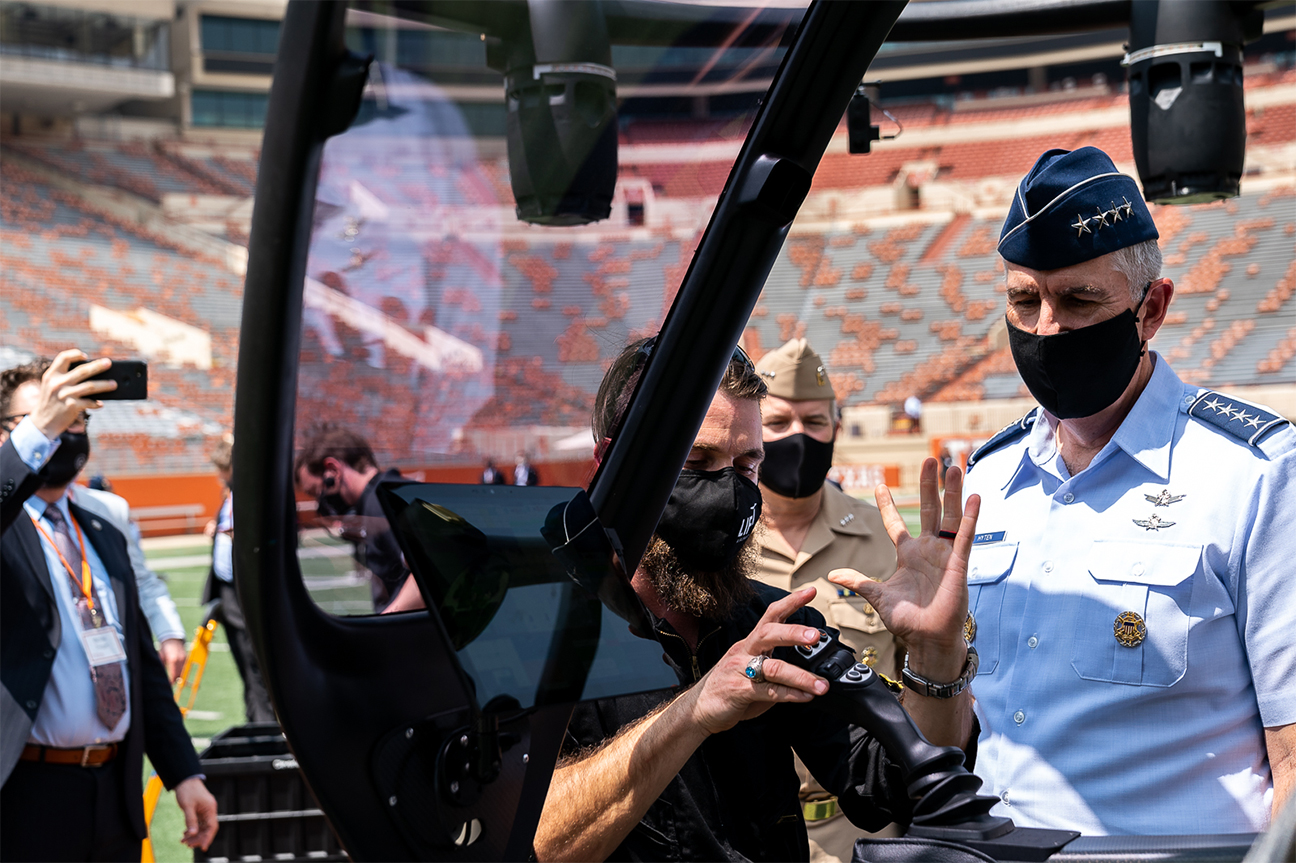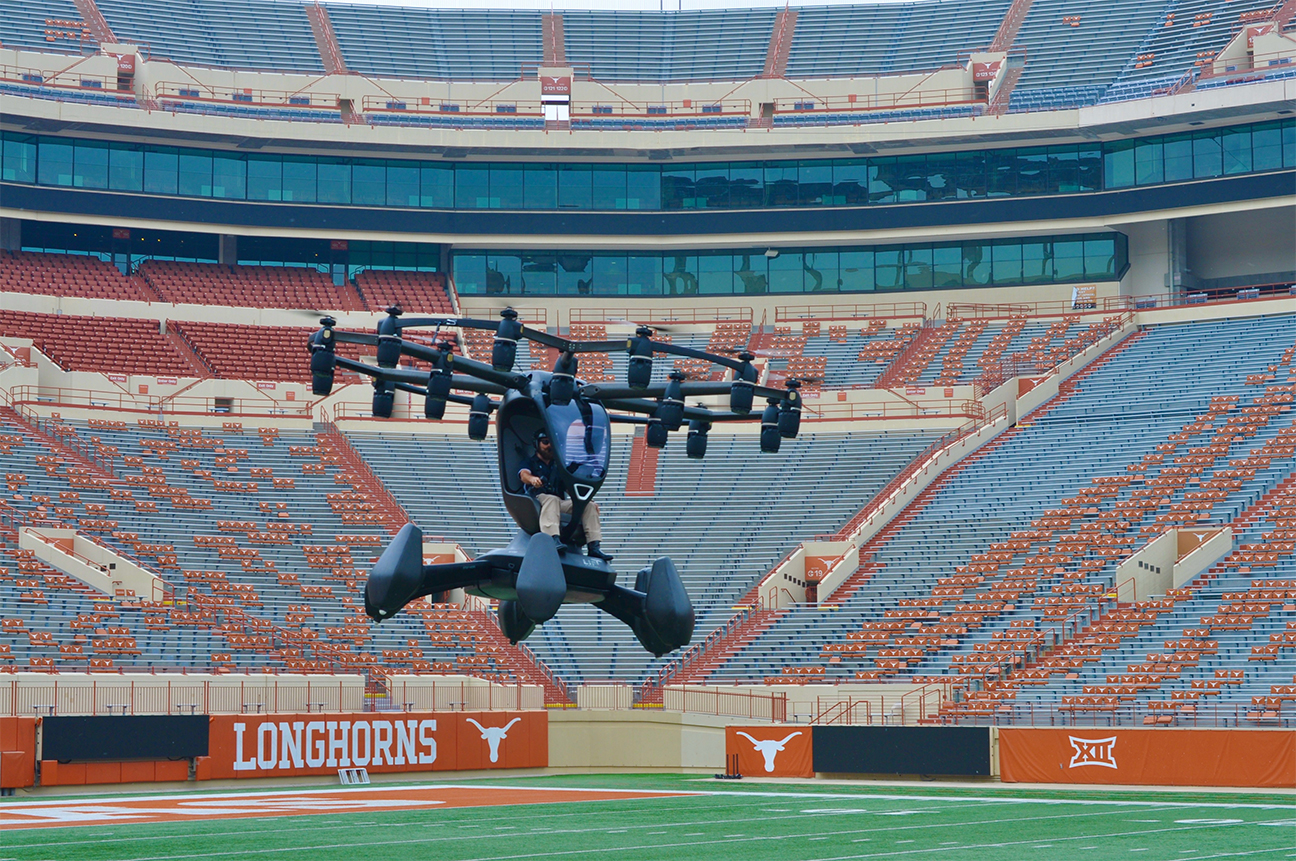AUSTIN, Texas – The Air Force Research Laboratory’s AFWERX program co-organized and participated in an event April 9 at Austin’s Capital Factory and UT-Austin, that championed commercial-military innovation and collaboration to the Joint Requirements Oversight Council.
As a statutory council to the Chairman of the Joint Chiefs of Staff, the JROC validates the capabilities, capability gap(s) and the analysis for mitigating the gap(s) in support of the acquisition review process across all of the branches of the Department of Defense. Led by the vice chairman of the Joint Chiefs of Staff, who also serves as the co-chair of the Defense Acquisition Board, members of the JROC include the vice chiefs of staff of each military service.
Attendance included State of Texas government officials, University of Texas at Austin faculty and administration and nationally recognized investment and entrepreneurial leaders, including Mark Cuban. The event featured presentations and demonstrations by AFWERX, the Army Futures Command and the Defense Innovation Unit at Texas’ entrepreneurial hub, Capital Factory, and included a company-sponsored live flight at UT-Austin’s football stadium of LIFT Aircraft’s “Hexa,” one of the aircraft currently included in AFWERX’s Agility Prime program.
Industry and DOD collaboration success stories served as the event’s focus as well as mitigation of any challenges that industry seeking to collaborate with the DOD may face. Because these collaborations involve defense acquisition, this event could potentially influence the JROC’s decisions as a defense acquisition authority, which can, in turn, affect future acquisition processes.
During AFWERX’s presentation, Col. Nathan P. Diller, director of AFWERX, gave an introduction that was succeeded by conversational deep dives led by other AFWERX leaders about AFWERX’s three divisions: Spark, AFVentures and Prime. The presentation provided AFWERX with an opportunity to show how it transitions technologies into agile, affordable and accelerated military capabilities by teaming commercial technology developers with Air and Space Force talent.
“When we talk about AFWERX, AFWERX is fundamentally focused on extending that industrial base,” Diller said.
AFWERX’s Ryan “LEAFF” Erickson, a Special Warfare National Guard Airman, and Lt. Col. JR Gibbens, a Reservist, presented the AFVentures division. They explained how AFVentures facilitates matching funds between the Small Business Innovation and Research Program Office and the private investment community to align for-profit capital with capabilities that dually accelerate developing commercial technologies and solutions to military problems.
Vice Chief of Staff of the Air Force Gen. David W. Allvin emphasized to his fellow JROC members the driving force in the creation of AFWERX.
“First of all, we wanted to be able to make sure that we could leverage all of the talent within the United States Air Force,” Allvin said. “Second, AFVentures really has a lot to do with SBIR contracts and scaling that up. Some of the barriers to entry for the smaller startup companies that have some of the greatest ideas that we have not created, are ones we can actually clear.”
Gibbens expounded, saying that AFVentures has grown the industrial-military base by investing in—and essentially jumpstarting—innovative small and entrepreneurial companies.
“How do we invest in these companies?” Gibbens asked. “We follow with what the Department of Health & Human Services is doing and set up a venture capitalist program. Something the government does really well—89 other federal programs—is lend money to the tune of over a trillion dollars a year.”
He cited the Department of Energy loaning Elon Musk $465 million in 2010 to stand up the Tesla Fremont facility, which Tesla paid back in three years, as launching Tesla without costing the taxpayer anything and actually making money for the government.
Diller described how AFVentures has benefitted from this model.
“We have been able to work with the Small Business Administration, which has allowed us to get waivers for up to $50 million of SBIR funding if there are matching funds out there,” Diller said. “Since we have begun this AFVentures model, which is a little over 18 months ago, we are now getting $5 for every dollar we are putting in; that is $2.2 billion dollars of non-DoD commercialization. These are funds that are going directly into companies that are producing something that is of interest to us. This is how we get these returns—in, some cases, a 20 to 1 return. Another area that we are looking at besides SBIR is this idea of being able to use a debt program.”
Following the presentation attendees gathered at the UT-Austin football stadium for a live flight demonstration of “Hexa,” an eVTOL aircraft built by Agility Prime contractor LIFT Aircraft, and interacted with local business leaders and technology companies at a business showcase in the stadium’s Hall of Heroes.

Vice Chairman of the Joint Chiefs of Staff, Gen. John E. Hyten speaks during the Joint Requirements Oversight Council’s visit to Austin, Texas April 9 for an event showcasing commercial and military collaboration, including the Air Force Research Laboratory’s AFWERX program. (Photo courtesy of Joint Requirements Oversight Council)

After a landing in the University of Texas at Austin football stadium, LIFT Aircraft’s Flight Development Engineer and Chief Pilot, Jace McCown, explains to Vice Chairman of the Joint Chiefs of Staff, Gen. John E. Hyten, how to operate LIFT’s “Hexa” electric vertical takeoff and landing aircraft. (Photo courtesy of Joint Requirements Oversight Council)

LIFT Aircraft’s “Hexa” electric vertical takeoff and landing aircraft flies into the University of Texas at Austin football stadium for a live demonstration of this AFWERX Agility Prime collaboration during the April 9 event. (Photo courtesy of Joint Requirements Oversight Council)

